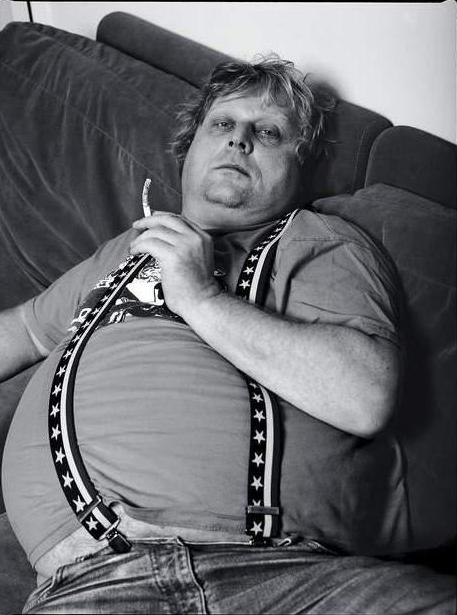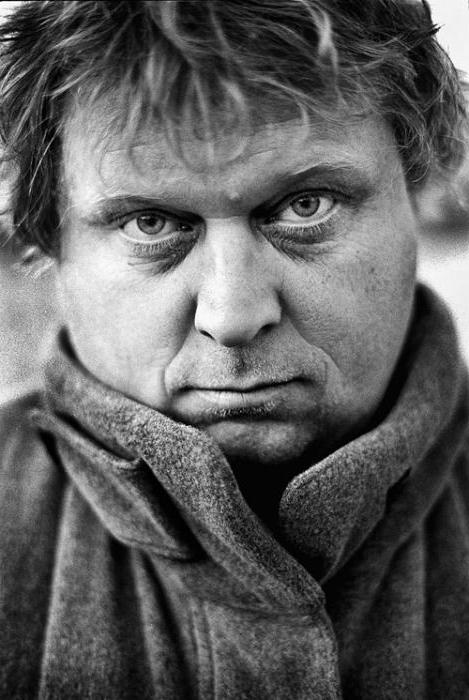A bright film artist, public figure, journalist Theodor van Gogh lived a short but very eventful life. Even many years after his death, his views and statements continue to disturb society, and his films only gain popularity over the years.
Early years and family
Theo van Gogh was born in The Hague on July 23, 1957. His father, Johan van Gogh, was the grandson of the brother of the painter Vincent van Gogh. The boy was named with the family name Theodore, he became the third representative of the family with that name. The first was the brother of the artist, who took care of Vincent all his life, and it is to him that we should be grateful for the unusual painting by van Gogh. The second Theo was a member of the Resistance in the Netherlands during World War II, he was captured and was brutally executed.
Young Theo from childhood was very active and inquisitive, he studied well at school and after graduation he entered the University of Amsterdam, the Faculty of Law. But studying there seemed to him too boring, and he left without having received a higher education.
Great great grandfather
The great-grandfather of the director - the brilliant artist Vincent van Gogh - is known as a unique painter and graphic artist. He had his own unique vision of the world, which he expressed in his masterpieces. He was the founder of such a movement in painting as expressionism, and treated his paintings as children. All his life he lived in poverty, he was greatly helped by Brother Theo, who in many respects took care of Vincent’s material well-being and also helped him maintain peace of mind as much as possible. Despite his difficult and short life, van Gogh left a rich creative heritage - about a thousand paintings and the same number of drawings. The value of these works is incredibly high, so his nephews and his children have always been wealthy people. The artist’s grandson, the director’s father, decided to transfer the large collection of paintings to the state of the Netherlands for free use. The director said that he did not regret it at all, otherwise he would still spend all the money on the movie.

Movie work
Having dropped out of school and moved to the city of Amsterdam, Theo decided to take up directing. He is enthusiastically working on the amateur film Luger. This 1982 black and white picture was about a psychopath who kidnaps a mentally retarded girl for ransom. Van Gogh himself considered the picture unsuccessful, on the day of the premiere, the director, right in the auditorium, told the audience that the film was bad and that they could leave immediately. Although the tape was noted by critics as an interesting art house work. For some time the film was considered lost, and only after the death of the director was a copy accidentally found in the basement of his house.
In total, Van Gogh made 13 feature films and about a dozen documentaries, and the Danish Film Academy awarded him four times for best directing. Critics believe that Theo did not manage to make his best films, but his most outstanding work is the painting “Blind Date” (1996), it was awarded at the Golden Calf Film Festival in the Netherlands, and the film “In Interest of the State ”(In the Interest of the State, 1997), which also won an award at the San Francisco Film Festival. The last film, “06.05” (2004), was dedicated to the brutal murder of friend Theo Pim Fortoyne. He adhered to anti-Muslim views and was an active political figure, he was against immigration of Muslims to the Netherlands, was an activist in the environmental movement, and called for a ban on wearing natural fur. Theo makes an investigation film (imaginary) about this scandalous murder. He did not have time to complete the film’s editing, his colleague did it.
The painting "Submission"
Many of Theo van Gogh's works touched on political and sensitive issues. These pictures caused threats and wide resonance, but the director did not pay attention to it, he wanted to draw attention to injustice and the problems of life. And “Submission,” the film that Theo makes in 2004, also addresses the acute problem of woman abuse in Islamic society. This ten-minute painting was scripted by Ayahan Hirsi Ali, a member of the Dutch parliament and refugee from Somalia. She herself had once fled the country so as not to marry under duress. The film tells the stories of four women whose images are intentionally schematized, so that it is clear that millions of women can be seen behind their fates. Each heroine tells what torment she had to undergo: they were beaten, raped, disposed of as a thing. In 2004, the film was shown on television in the Netherlands and caused a huge resonance. The authors said that they did not want to insult Muslims, but simply wanted to draw attention to the problem of violence. Numerous threats began to be heard against the director, the police were even forced to put security on him and the screenwriter. But Theo didn't save it.

Other types of creativity
In addition to the movie. Theo van Gogh was engaged in many other creative professions, one of them is journalism. Since 1980, he has been writing a column for a newspaper in which he expresses his opinion on politics, culture, and news. In his journalistic texts, he was often harsh, expressed provocative opinions. His sharp tongue was feared by many politicians and famous people. He writes the book “Allah Knows Better”, in which he condemns Islam. Theo also tried himself as an actor and starred in the movie Northerners (1992).
In addition, since the 1990s, Theo van Gogh has been active in television. He hosts the weekly talk show "Pleasant Chat, or Last Ear", for which he was even named the best television presenter of the Netherlands. Also for television, the director removes the six-episode series Medea. The plot is borrowed from ancient Greek tragedies, but their events are transferred to modern politics.
Political Views
Theo van Gogh adhered to republican views, he was even a member of a society that called for the abolition of the monarchy in the Netherlands. Theo’s political views were largely radical, he rebelled against the Islamization of Europe and the Netherlands, and supported the military invasion of Iraq in 2003. Theo did not like all religions; several times he spoke very sharply against Judaism and the Jews. On his Healthy Smoker website, he sharply criticized politicians and public figures.
Tragic death
On November 2, 2004, in the morning, Theo van Gogh went to work by bicycle. On the way, Mohammed Buyeri shot him 8 times, then he tried to cut off the director’s head and stuck a knife in his chest. He also wounded the riot police. The killer was immediately arrested. During the investigation, he stated that he had punished van Gogh for the film "Submission", and even a few years later said that he did not repent of his deed. He was sentenced to life imprisonment in prison without the right to parole.
The reaction to the death of the director
After Theo died, the city of Amsterdam was shaken for a long time by demonstrations and actions. This was the first political assassination in Holland in the last 100 years. Police carried out mass arrests of people suspected of involvement in the murder and terrorist activities. There were repeated attacks on mosques, arson. People brought flowers and candles to the scene of the murder. The unrest, by and large, has not subsided so far. The deputies were divided into two parts, some demanding toughening laws for immigrants, others say that liberal legislation should be maintained.
The director’s legacy began to receive great attention. The best films directed by Theo van Gogh and today continue to cause interest among viewers.